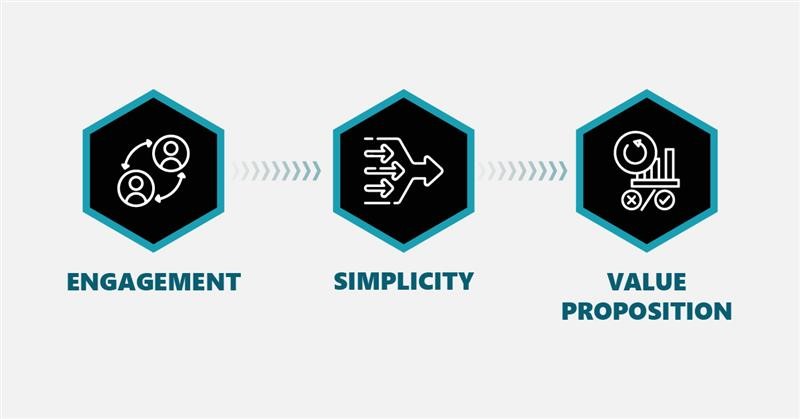Education technology has gained momentum beyond measure. Today, the global edtech market size sits at USD 348.8 billion (P&S Intelligence). It also indicates a surge of nearly USD 100 billion from the previous year. Gaining strength with each passing year, who would have thought that the chalk-and-board teaching pedagogies would turn to virtual mode?
Revolutionizing through new technologies, education tech is growing by leaps and bounds. The significant drivers of this growth can be attributed to regional growth dynamics, online learning models, mobile devices, artificial intelligence, machine learning, smart classrooms, lifelong learning, and upskilling. Let us take a closer look at the way edtech advancements are helping add value to the entire education system, specifically the higher education segment.
Is the Edtech industry going downhill?
Not really, for an answer! Higher education leaders are making massive improvements in the technology used in facilitating quality education. Factors influencing the current surge are dependent on:
- Market Saturation
The K-12 education landscape is flooded with multitudinous startups that enable fostering a highly competitive environment. The saturation and freezing of the opportunities make it tricky to differentiate and sustain profitability.
- Funding Switch
Funding off late has become more scrutinized with investors looking for sustainable business models and clear paths to profitability.
- Regulatory Changes
Higher screen time, data privacy, and quality of education impact business operations. Governments in various states are leveraging stricter regulations on edtech to control the stated issues.
- Technological advancements
Artificial intelligence is no longer a novel concept. It has spread its wings across diverse industries; edtech is not new either. This is why it necessitates the evolution of technology used in K-12 education as well.
- Evolving Educational Needs
With AI, change is the only constant. Attending to the educational needs is a must in today’s times. Every learner is different, hence designing a personalized learning model is a tough nut to crack. This can easily be catered to with evolving AI edtech.
- Global Market Scenario
It is time to explore newer developing regions, which facilitate massive growth opportunities for edtech.
Edtech- Challenges Faced So Far:
- New meets the traditional education systems
Technology integration solutions are evolving and getting closer to lesser resistance in educational institutions from adopting them; as they offer seamless co-existence.
- Learners’ engagement and retention
The newer edtech innovations are focussing on ensuring consistent use of technological tools; which poses a challenge at times.
- Scalability Slack
While some edtech products work well on a small scale, or in a restricted environment. They may struggle to maintain their effectiveness as they expand wide and far across regions or audiences.
- Data Security
Handling sensitive and critical data demands responsible behavior while maintaining trust. Edtech firms are required to comply with intricate data protection laws to safeguard the same.
- Technological Access and Inequality
Inadequate access to stable internet and modern digital equipment can retard the growth of edtech initiatives by higher education leaders.
- Qualitative challenges
Tech-based solutions pose a declining trend when it concerns the learning outcomes via edtech tools vs traditional strategies.
- Economic hurdles
Constrained school budgets, restrictive capability to imbibe newer educational technologies, and restriction of significant initial investments pose an added pressure on them to perform well.
Edtech- 10 Ways to Adapt to High Demand:
- Educational institutions must embrace a continued innovation trajectory
- They must keep an eye on the user-centric designing
- Organizations and institutions must invest in scalable solutions
- It is critical to strengthen data security if you wish to strive for stronger
- Developing comprehensive learning environments shall work wonders for edtech advancements manifold
- Be open to adapting to a diverse range of learning environments
- Pursue strategic partnerships via collaborating with educational institutions, governments, and other stakeholders in edtech giants
- Mitigate financial risks by diversifying revenue streams
- Customize educational products and expand your geographical presence
- Demonstrate impact and monitor regulatory changes
Edtech- Growth Value Addition Opportunities:
- Increasing penetration of the internet and mobile device accessibility, opportunities for edtech companies are willing to adapt their products to local languages
- Corporate training and arming the workforce with the right technological upgrade is a must to address the rapid technological challenges
- Artificial intelligence and hyper-personalization are leveraging and enabling grossing massive benefits for individual students; addressing their needs
- Virtual and augmented reality are transforming traditional learning patterns; giving way to immersive learning experiences
- Online degrees and credentialing are paving the way for learning on the go; with enhanced pressure on gaining quality skills with ease of learning from the comfort
- Assessment technologies shall assess student learning and facilitate immediate feedback
- Special needs education curriculum makes learning customizable while targeting the needs of learners with disabilities with adaptive technologies in higher education
Edtech- 3 Essentials to Designing Effective Technology:

Making education user-friendly and targeted is an incredible way to get everyone on the same page. Artificial intelligence and generative AI raging the k-12 education scenario worldwide. It is time to invest in highly tech-savvy and convenient educational prodigies to guard the interest of the learners and gain them for a longer retention time. Stride ahead with a strengthening edtech plan!

